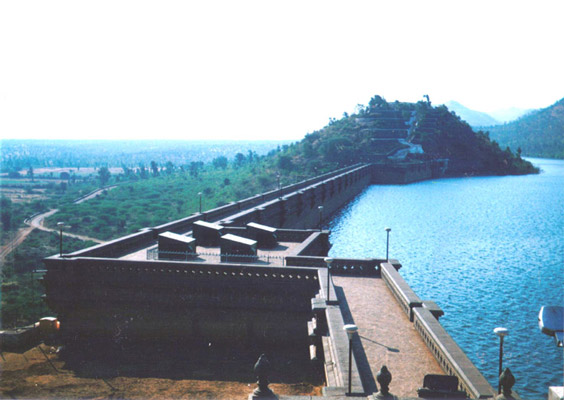
One of the more prominent Hindu Royal familes of the late medieval era, was that of the Wodeyars or Wadiyars, who ruled over Mysore from the late 1300s till 1950. They were primarily descended from the Urs clan, also called Aras, a surname that means royalty. They were originally Palegars, defending the region around Mysore, during the Vijayanagara Empire. The kingdom’s name comes from a Kannada word odeyaru meaning Lords, and was assumed by the first Raja Yaduraya. They claim their descent from Yaduvamsha itself, though as per most historians, they generally were feudal lords who claimed Pauranic ancestry.
With the decline of the empire post Tallikota, they declared independence under Timmaraja Wodeyar II, who was the first independent ruler, who seized the town of Srirangapatna in 1610. During the reign of Hyder Ali and Tipu Sultan, they could not wield much power, and after Tipu’s death, they entered into a subsidiary alliance with the British.
One of their greatest rulers would be Krishna Raja Wadiyar IV, also known as Nalwadi Krishna Raja Wadiyar,whom Paul Brunton described as the ideal philosopher-king, and under whom Mysore achieved great progress. If today Mysore region is one of India’s more developed areas, an educational and industrial hub, the credit goes to Nalwadi Krishnaraja Wadiyar, who had the foresight to invest in education, public works and industry.
Nalwadi Krishna Raja Wadiyar was born on June 4, 1884, to Chamarajendra Wadiyar and Vani Vilas Sannidhana. His father was an equally accomplished ruler, who built the Lalbagh Glass Palace, Mysore Zoo, and was a great patron of arts and culture. With his father passing away when he was just 10 years old, it was his mother Vani Vilas, who ruled the state as regent, till he reached the majority age in 1902. He was instructed by P.Raghavendra Rao in Kannada, Sanskrit, Western studies.


He also learnt horse riding, classical music, and was instructed in the principles of administration by Sir Stuart Fraser, and toured the countryside extensively to get a first hand knowledge of the people’s life. Coronated as Maharaja of Mysore on August 9,1902 when he turned 18, Krishnaraja Wadiyar began to actively invest in education.
Mysore already had become the first Indian state to have a representative assembly in 1881, and during his reign, he expanded it into a bicameral legislature, with the introduction of the Mysore Legislative Council. It was under Nalwadi, that Mysore became the first Indian state to generate hydro electric power, and Bangalore was the first Indian city to have street lights in 1905. His reign saw some of the most significant investments in irrigation. Vani Vilasa Sagara, the first dam in Karnataka at Chitradurga and of course the Krishna Raja Sagar Dam that benefited so many farmers in the Cauvery regions of Mysore, Mandya.


Mysore was one of the first Princely states to provide reservations to the backward castes in education as well as in the legislature. Many Dalits were given land to till, and he provided land to betel nut growers at Ashokapuram near Mysore. He abolished child marriage, gave special importance for girls’ education, and offered scholarship for widowed women. He also set up schools, colleges for women, as well as the backward classes, gave them scholarships.
He was the first chancellor of Benares Hindu University, and also it’s co founder, who played a major role in it’s establishment. It’s not without reason, that Pandit Madan Mohan Malviya,described him as a true epitome of Dharma. He also founded the University of Mysore in 1916, which was the first wholly Indian university to be established, on the reccomendation of C.R. Reddy and it’s first VC was H.C.Nanjundaiah who played a major role. The Indian Institute of Science started during his reign, when he donated 371 acres of land, as well as funds for it.
He also set up the into Eye Hospital in Bangalore, one of the older eye hospitals in India. And many notable industries like Sandalwood Oil Factory, steel plant at Bhadravathi, Mysore paper mills. As well as iconic institutions like State Bank of Mysore and Mysore Medical College.
The Maharaja was also a patron of music, he himself played 8 instruments including mridangam, sitar, veena, nadaswaram. Many famous musicians like Ustad Vilayat Hussain Khan, Gauhar Jaan, Barkatullah Khan were patronized by him. He himself composed many poems in Kannada, while his Asthan Vidhwan, Kadagathur Seshacharya is known for his contributions towards Sanskrit and Kannada literature.

He was wedded to Maharani Pratapa Kumari Devi, the youngest daughter of Rana Bane Singh of Vana, Kathiawar. He passed away on August 3,1940, but not before leaving a rich legacy in the development of Mysore State. Today the people of Mysore-Bangalore would forever be indebted to him. Mahatma Gandhi called him a true Rajarshi, while Paul Brunton, called him the example of the ideal Philosopher King as defined in Plato’s Republic.